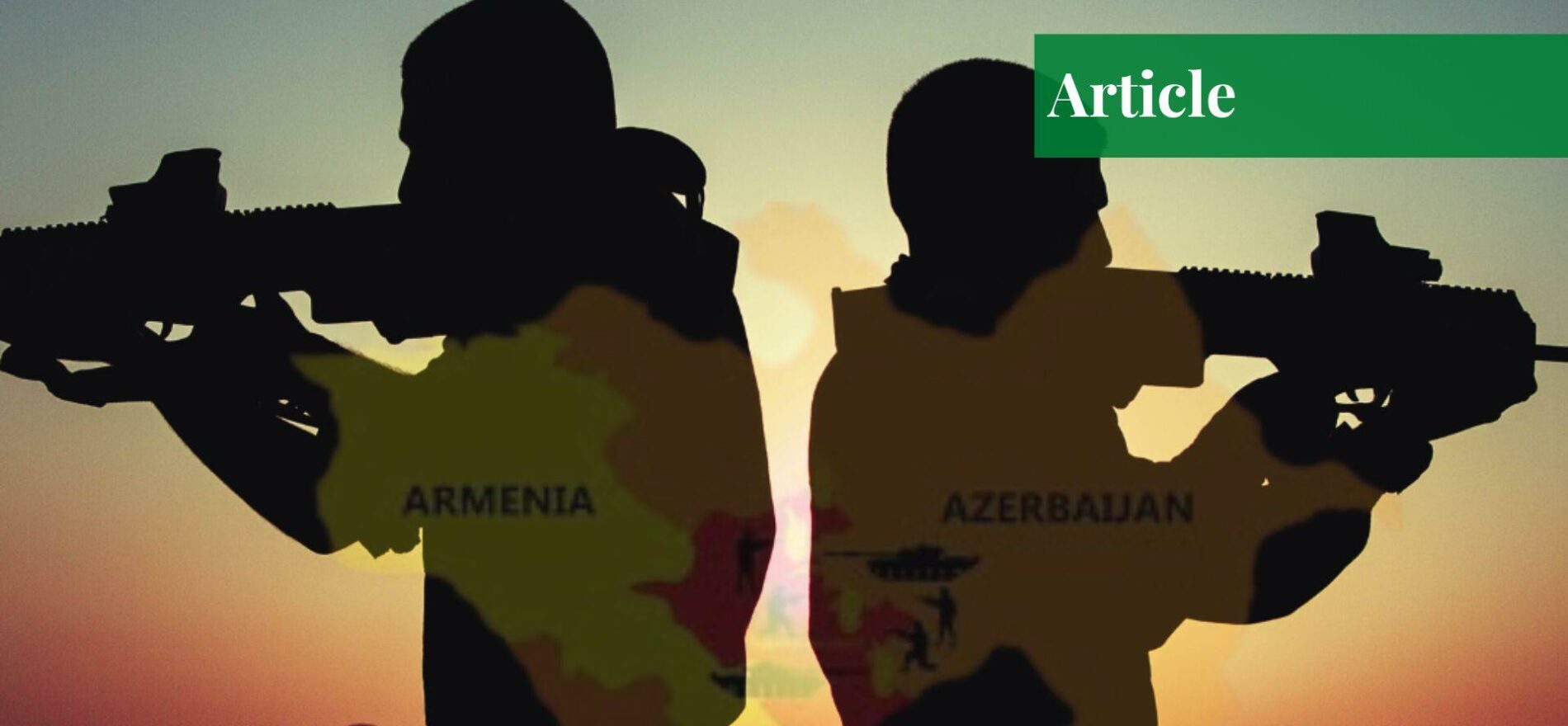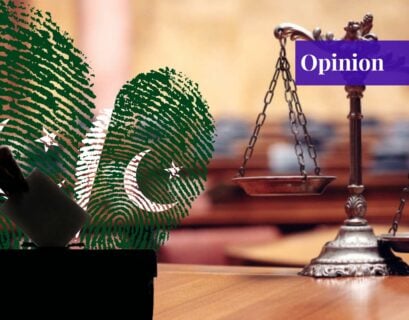Torchbearer CSS Academy – TBA Karachi ignites aspirations and transforms them into valuable knowledge and enthusiasm. They magnify talents and carve abilities to achieve dedicated success, by providing quality education for competitive exam aspirants who believe in themselves and their goals.
Background
In 1923, the Soviet Union established the Nagorno-Karabakh Autonomous Oblast—home to a 95 percent ethnically Armenian population—within the Azerbaijan Soviet Socialist Republic. Nagorno-Karabakh’s regional legislature passed a resolution in 1988, declaring its intention to join the Republic of Armenia, despite its official location within Azerbaijan. An armed conflict between the two republics over Nagorno-Karabakh, which has a long history of ethnic tensions, was kept under relative control during Soviet rule.
Causes of the Nagorno-Karabakh Conflict
A. Historical and Territorial Disputes
Nagorno-Karabakh is an ethnically Armenian region, but it was assigned to Soviet Azerbaijan in the 1920s. This has been a source of tension between the two countries for many years.
B. Rise of Nationalism and Self-Determination
Both Armenia and Azerbaijan have strong nationalist sentiments, with each country claiming historical and cultural ties to Nagorno-Karabakh. This has fueled desires for self-determination and control over the region.
C. Differences in Religion and Ethnicity
The conflict also has ethnic and religious dimensions. Armenians are predominantly Christian, whereas Azerbaijanis are predominantly Muslim. These differences have sometimes exacerbated tensions between the two communities.
D. Competition for Power
The conflict is also influenced by political factors, including competition for power within the countries involved, as well as external factors such as geopolitical interests and alliances.
Consequences of the Nagorno-Karabakh Conflict
A. Creating Humanitarian Crisis
The conflict has led to the displacement of thousands of people, creating a humanitarian crisis with many families living in temporary shelters or struggling to access basic services.
B. Declining of Economic Sector
The conflict has disrupted trade and economic activities in the region, leading to a decline in the standard of living for many people.
C. Creating Political Instability
The ongoing conflict has strained relations between Armenia and Azerbaijan, making it difficult for the two countries to cooperate on regional and international issues.
D. Raising Military Tensions
The conflict has led to an increase in military tensions between Armenia and Azerbaijan, with both sides amassing troops and weapons along the border.
E. Paving Way for International Involvement
The conflict has drawn the attention of other countries, with some providing support to one side or the other, further complicating the situation.
Role of the United States
A. Acts as A Mediator and Diplomat
The US has been actively involved in mediating peace negotiations between Armenia and Azerbaijan, often in collaboration with other international actors such as Russia and France. For instance, the US co-chairs the OSCE Minsk Group that was established in 1992 to facilitate a peaceful resolution to the conflict.
B. Facilitates Humanitarian Aid and Assistance
The US has provided humanitarian aid and assistance to both Armenia and Azerbaijan, particularly in times of crisis or during post-conflict periods. This aid aims to alleviate human suffering, support refugees and internally displaced persons, and contribute to rebuilding efforts.
C. Sales Arms and Security Cooperation
The US has also been involved in arms sales and security cooperation with both Armenia and Azerbaijan. While it seeks to promote stability and security in the region, these sales have sometimes raised concerns about potentially perpetuating the conflict or fueling an arms race.
D. Political Support and Statements
The US government regularly makes statements expressing concern about the escalation of violence and the need for a peaceful resolution. It has called for an end to hostilities, ceasefire agreements, and respect for international law, including the protection of civilian lives.
E. Provides Economic and Development Assistance
The US has provided economic and development assistance to both Armenia and Azerbaijan to promote stability and development. These efforts aim to address underlying socio-economic issues that can contribute to the conflict, such as poverty, unemployment, and inequality.
Role of Russia
A. Acts as a Mediator and Diplomat
Russia has been actively involved in mediating peace negotiations regarding the conflict between Armenia and Azerbaijan, often as part of the OSCE Minsk Group, which it co-chairs with France and the United States. Russia has also held talks with the leaders of both countries, offering assistance in reducing tensions and resolving the conflict.
B. Supplies Military Weapons to Both Sides
Russia is a major supplier of arms to both Armenia and Azerbaijan and has provided military support to both sides in the past. However, Russia has historically had closer ties with Armenia, and has maintained a military base in the country since 1995.
C. Provides Humanitarian Assistance
Russia has provided humanitarian assistance to the people affected by the conflict, including refugees and internally displaced persons. It has also supported international efforts to provide aid to those affected by the conflict.
D. Shows Political Influence
Russia’s political influence in both Armenia and Azerbaijan is significant largely due to its historical ties with the region. Russia has sought to maintain good relations with both countries, while also seeking to promote stability in the region.
E. Plays Vital Role in Peacekeeping
In November 2020, Russia brokered a ceasefire agreement between Armenia and Azerbaijan, and sent peacekeeping troops to monitor the agreement. The peacekeeping mission has been praised by both sides for its effectiveness in reducing violence and helping to maintain the ceasefire.
Role of Turkey
A. Supports for Azerbaijan Territorial Integrity
Turkey has consistently expressed its support for Azerbaijan’s territorial integrity and has advocated for a peaceful resolution to the conflict. Turkey has called for the withdrawal of Armenian forces from the Nagorno-Karabakh region and surrounding territories that are internationally recognized as part of Azerbaijan.
B. Strengthens Bilateral Relation with Azerbaijan
Turkey has strengthened its bilateral relations with Azerbaijan and has actively engaged in high-level talks and meetings. Turkish President Recep Tayyip Erdogan has condemned Armenia’s actions and expressed solidarity with Azerbaijan through various political initiatives.
C. Supplies Weapons to Azerbaijan
Turkey has supplied Azerbaijan with weapons, including drones, armored vehicles, and ammunition. There have also been reports of Turkish military advisors and personnel being involved in training and coordination with the Azerbaijani armed forces.
Role of Regional and Global Organizations
A. Role of the United Nations
The United Nations has passed four resolutions on Nagorno-Karabakh Conflict, UNSC resolutions 822, 853, 874 and 884 in 1993. While efforts to resolve the conflict between Armenia and Azerbaijan are ongoing, the situation remains complex and unresolved.
B. Role of Organization for Security and Cooperation in Europe (OSCE)
The Organization for Security and Cooperation in Europe (OSCE) Minsk Group, co-chaired by France, Russia, and the United States, has been mediating the conflict since its inception in the early 1990s. Their efforts have aimed to facilitate negotiations between the parties involved. While efforts to resolve the conflict between Armenia and Azerbaijan are ongoing, the situation remains complex and unresolved.
C. Role of Organization of Economic cooperation (OIC)
The OIC’s role in the Nagorno-Karabakh conflict has been centered around supporting peaceful resolutions, advocating for dialogue, and providing diplomatic assistance to member states involved.
Prospects for Pakistan from the Nagorno-Karabakh Conflict
A. Paves the Way for Diplomatic Engagement
Pakistan has historically maintained good relations with Azerbaijan and has expressed solidarity with the country during the conflict. This provides an opportunity for diplomatic engagement between Pakistan and Azerbaijan, potentially leading to increased cooperation in areas such as trade, energy, and defense.
B. Mitigates Economic Stress
The resolution of the conflict could open up new economic opportunities for Pakistan. For instance, the restoration of peace and stability in the region could pave the way for the construction of regional infrastructure projects, such as pipelines or transportation routes, which Pakistan could potentially benefit from.
C. Resolves Security Issues
Given Pakistan’s expertise in security matters, it could offer support and participate in peacekeeping efforts in the region. This could enhance Pakistan’s standing as a responsible international actor and contribute to regional stability.
Challenges for Pakistan from the Nagorno-Karabakh Conflict
A. Balancing Relations with Armenia and Azerbaijan
Pakistan has historically maintained friendly ties with both Armenia and Azerbaijan. The conflicts between these two countries can put Pakistan in a challenging position, as it will need to balance its support for Azerbaijan with its diplomatic relations with Armenia. Striking the right balance without alienating either side can be a delicate task.
B. Inflow of Refugees
In the event of a large-scale escalation or prolonged conflict, there is a possibility of a refugee crisis, with displaced people seeking refuge in neighboring countries. Pakistan, being a regional player, could potentially face the challenges associated with managing such an influx of refugees and ensuring their safety and well-being.
C. Security Concerns
The conflicts in the region could have broader security implications, including the potential for extremism or terrorist activities. This could pose security challenges for Pakistan, as it would need to monitor and mitigate any spillover effects that might impact its own security situation.
D. Inflation in the Market
Instability in the South Caucasus region can have economic repercussions that may affect Pakistan indirectly. Any disruption to regional trade routes or energy supply networks could potentially impact Pakistan’s own economic interests and energy security.
E. Paving Path for Regional Proxy Dynamics
The Armenia-Azerbaijan conflict has the potential to become a proxy battleground for other regional powers. Pakistan will need to navigate these complex dynamics carefully to avoid being drawn into or negatively affected by wider regional rivalries.
Future for Pakistan from the Nagorno-Karabakh Conflict
A. Diplomatic Intervention in the Conflict
Pakistan can use its diplomatic channels to encourage both sides to resolve their conflicts peacefully. As a non-regional actor, Pakistan can provide a neutral perspective and help bridge the gap between the two sides.
B. Humanitarian Assistance
In the event of a refugee crisis or other humanitarian emergencies, Pakistan can provide humanitarian assistance to those in need. Pakistan has a long history of providing aid to countries during times of crisis and it can leverage this experience to help those affected by the Armenian-Azerbaijani conflict.
C. Economic Opportunities in Terms of Energy Resources and Trade
The South Caucasus region has significant economic potential, particularly in terms of energy resources and trade. Pakistan can explore opportunities for economic cooperation and investment with both Armenia and Azerbaijan, which could help promote economic development and regional integration.
D. Cooperation to Counter Terrorism
Instability in the South Caucasus region can have broader security implications, including the potential for extremism or terrorist activities. Pakistan can engage in counterterrorism cooperation with both Armenia and Azerbaijan to prevent the spillover of extremism and violence.
E. Plays Vital Role in Regional Integration
Given its strategic location, Pakistan can play a key role in promoting regional integration and connectivity between South Asia and Central Asia. This could involve exploring transportation and trade routes that connect the two regions, which could in turn foster greater economic growth and political stability in the wider region.
If you want to submit your articles, research papers, and book reviews, please check the Submissions page.
The views and opinions expressed in this article/paper are the author’s own and do not necessarily reflect the editorial position of Paradigm Shift.



















